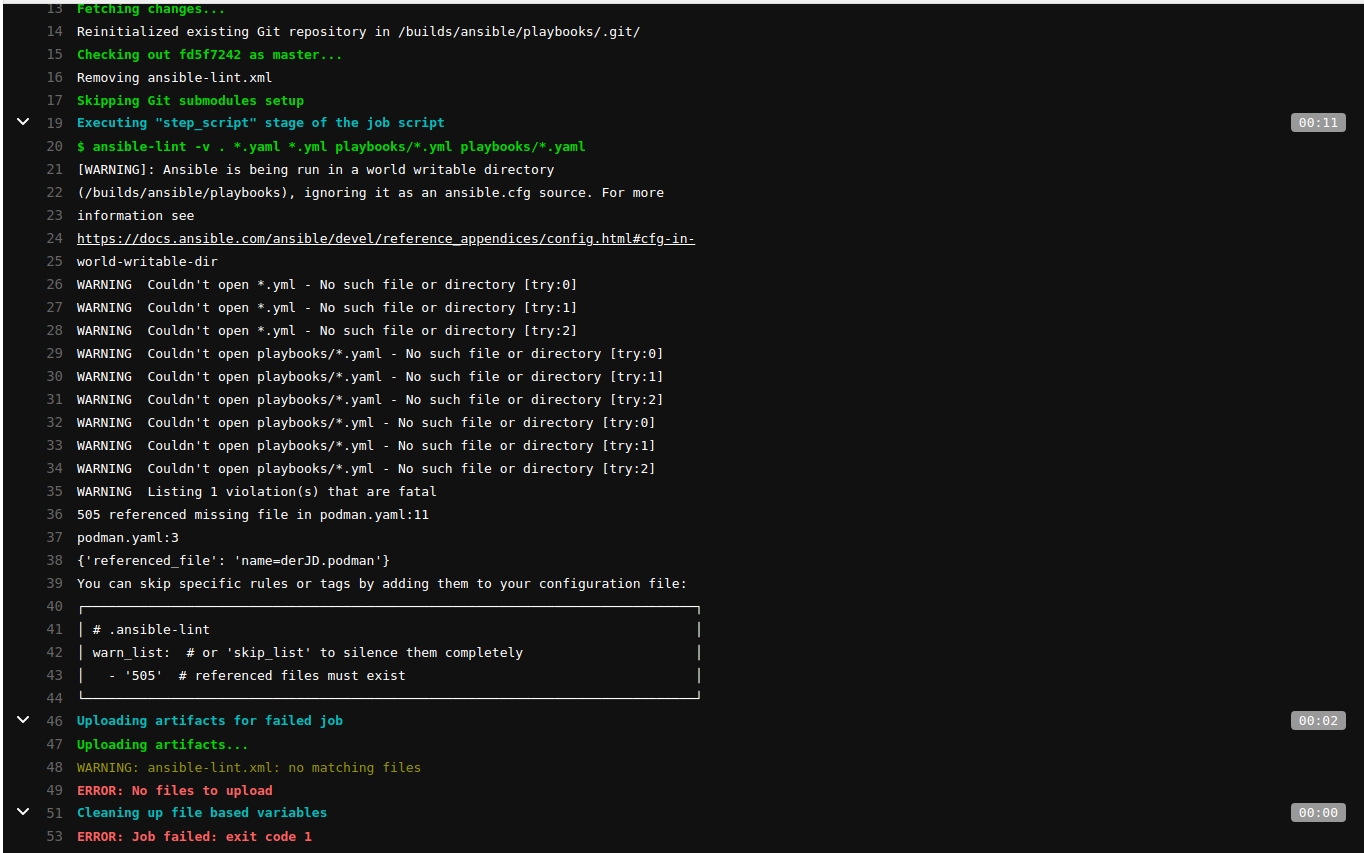Using Ansible content that depends on non-default dependencies can be tricky.Packages must be installed on each node, play nicely with other software installedon the host system, and be kept in sync.
Import ansiblerunner: def run: # create an Ansible playbook as a native Python dict object. Currently # ansible-runner does not validate the playbook structure so it needs to be # correct when passed in otherwise ansible will fail. Playbook = 'hosts': 'eos', 'gatherfacts': False, 'roles': 'name': 'ansible-eos', 'function': 'clear. Hey @Cerci, Of course its possible. You can do it the following way: import os import sys from collections import namedtuple from ansible.parsing.dataloader import DataLoader from ansible.vars import VariableManager from ansible.inventory import Inventory from ansible.executor.playbookexecutor import PlaybookExecutor variablemanager. # this addes the path endpoints that allow ansible work be run from a # virtualenv when ansible-runner calls ansible. Setting the path is not # necessary if ansible is installed in system python. Path = '/home/sprygada/Workspaces/ansible/bin:/home/sprygada/.virtualenvs/ansible/bin:' path += os.environ.get('PATH', ') # setup various environment vars to be set prior to starting the ansible. What follows is an Ansible guide that will take you from installing Ansible to automatically deploying a long-running Python to a remote machine and running it in a Conda environment using supervisord. It presumes your development machine is on OS X and the remote machine is Debian-like; however, it shouldn't require too many changes to run it. I have imported ansible.runner into my python file. In this same directory is playbook1.yml. I basically want the equivalent in Python via Ansible Runner of running this at command line: ansible-playbook playbook1.yml -extra-vars 'foo=test' Any help or point to clear examples would be appreciated!
To help simplify this process, we have introduced the concept of ExecutionEnvironments, which you can create with Ansible Builder.
Execution Environments¶
Execution Environments are container images that serve as Ansible controlnodes. Starting in version 2.0, ansible-runnercan make use of these images.
An Execution Environment is expected to contain:
- Ansible
- Ansible Runner
- Ansible Collections
- Python and/or system dependencies of:
- modules/plugins in collections
- content in
ansible-base - custom user needs
Getting Started¶
To get started with Ansible Builder, start by creating anExecution Environment definition. Thisfile allows you to specify which content you would like to include in yourexecution environment, such as collections, Python requirements, andsystem-level packages.
Once you have created a definition, read through the CLI Usage.
Collection Developers¶
Collection developers can declare requirements for their content by providingthe appropriate metadata. For more information, seeCollection-level Metadata.
Contents:
- Installation
- Execution Environment Definition
- CLI Usage
- Container
buildcommand
- Container
- Collection-level Metadata
Released:

'Consistent Ansible Python API and CLI with container and process isolation runtime capabilities'
Project description
Ansible Runner is a tool and python library that helps when interfacing with Ansible directly or as part of another system whether that be through a container image interface, as a standalone tool, or as a Python module that can be imported. The goal is to provide a stable and consistent interface abstraction to Ansible.
For the latest documentation see: https://ansible-runner.readthedocs.io
- We use GitHub issues to track bug report and feature ideas...
- ... and GitHub Milestones to track what's for the next release
- Want to contribute, check out our guide
- Join us in the
#ansible-runnerchannel on Libera.chat IRC - Join the discussion in awx-project
- For the full list of Ansible email Lists, IRC channels see the Ansible Mailing lists
Release historyRelease notifications | RSS feed
2.0.2
Ansible Runner Python Tutorial
2.0.1
2.0.0
2.0.0.0rc3 pre-release
2.0.0.0rc2 pre-release
2.0.0.0rc1 pre-release
2.0.0.0b1 pre-release
2.0.0.0a5 pre-release
2.0.0a4 pre-release

2.0.0a3 pre-release
2.0.0a2 pre-release
2.0.0a1 pre-release
1.4.7
Ansible Runner Python Download
1.4.6
1.4.5
Ansible Runner Python Programming
1.4.4
1.4.2
1.4.1
1.4.0
1.3.4
1.3.3
1.3.2
1.3.1
1.3.0
1.2.0

1.1.2
1.1.1
1.1.0
1.0.5
1.0.4
1.0.3
1.0.2
1.0.1
Download files
Download the file for your platform. If you're not sure which to choose, learn more about installing packages.
| Filename, size | File type | Python version | Upload date | Hashes |
|---|---|---|---|---|
| Filename, size ansible_runner-2.0.2-py3-none-any.whl (77.9 kB) | File type Wheel | Python version py3 | Upload date | Hashes |
| Filename, size ansible-runner-2.0.2.tar.gz (144.8 kB) | File type Source | Python version None | Upload date | Hashes |
Hashes for ansible_runner-2.0.2-py3-none-any.whl

| Algorithm | Hash digest |
|---|---|
| SHA256 | a6e7d108b6445425a3086942816bb3b252efb253a1536cedb065391897c574fa |
| MD5 | 12d81a13b5eabd96e233d4ca81b7016c |
| BLAKE2-256 | c61b2ed2d3b76277402c49c93f95a1fe317fefde256ddf9d7504eeae440a78f9 |
Hashes for ansible-runner-2.0.2.tar.gz
| Algorithm | Hash digest |
|---|---|
| SHA256 | c02b690803ec0be4453411c53743cd3fdca1dfc66dfa075794e14e717c5b61b3 |
| MD5 | 8a26b02132848b765f785ff56e90e49d |
| BLAKE2-256 | d7e21ece0627d214cd8c47fc28a0d64ada7be71cd8e614a76492b1aa1fafbe8a |